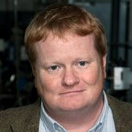Advancements in the Reduction of Submicron Particle Concentrations
A special issue of Atmosphere (ISSN 2073-4433). This special issue belongs to the section "Aerosols".
Deadline for manuscript submissions: closed (4 September 2020) | Viewed by 14865
Special Issue Editors
Interests: aerosol science; filtration; nanoparticles; aerosol measurements; aerosol technology
Interests: aerosols; filtration; air cleaners; indoor air
Special Issues, Collections and Topics in MDPI journals
Special Issue Information
Dear Colleagues,
Submicron particles may induce more severe health effects than their larger counterparts. These small particles are ubiquitous in the atmosphere as well as in indoor or workplace air, and may originate from both natural and anthropogenic sources. In light of new insights into the effects of these particles and of new and upcoming legislation (e.g., in the field of traffic emissions), the reduction of submicron-particle concentrations is key to meeting new goals in view of public and occupational health. It is further of paramount importance in clean production. The reduction of submicron-particle concentrations can be achieved by various means, including technical measures (e.g., filtration), mitigation strategies (e.g., low emission zones), or improved process control (e.g., enhancing the stoichiometry in combustion).
Especially the sub-fraction of ultrafine particles (UFPs), that is, particles with a diameter below 0.1 µm, has raised increased attention in recent years, due to the advancements and better availability of aerosol measurement techniques for this size range and the increasing number of studies showing their potential health effects. UFPs can originate from a very wide range of sources, such as aircraft, ship, and street traffic emissions (including tailpipe emissions and brake wear), candle burning, welding fumes, and new particle formation due to the nucleation of natural and/or anthropogenic gaseous precursors. The reduction of UFP concentrations sometimes poses new challenges to the applied technical measures. The experimental proof of their effectiveness can sometimes be rather complex.
Contributions from all applicable fields are welcome, whether they deal with technical reduction measures, short- or long-term observations or simulations of submicron or UFP concentrations in the atmosphere, indoor or workplace air, new measurement techniques or methods for assessing the reduction of the concentration (e.g., filtration efficiency), or studies on the health effects of submicron or UFP concentrations.
Dr. Christof Asbach
Dr. Stefan Schumacher
Guest Editor
Manuscript Submission Information
Manuscripts should be submitted online at www.mdpi.com by registering and logging in to this website. Once you are registered, click here to go to the submission form. Manuscripts can be submitted until the deadline. All submissions that pass pre-check are peer-reviewed. Accepted papers will be published continuously in the journal (as soon as accepted) and will be listed together on the special issue website. Research articles, review articles as well as short communications are invited. For planned papers, a title and short abstract (about 100 words) can be sent to the Editorial Office for announcement on this website.
Submitted manuscripts should not have been published previously, nor be under consideration for publication elsewhere (except conference proceedings papers). All manuscripts are thoroughly refereed through a single-blind peer-review process. A guide for authors and other relevant information for submission of manuscripts is available on the Instructions for Authors page. Atmosphere is an international peer-reviewed open access monthly journal published by MDPI.
Please visit the Instructions for Authors page before submitting a manuscript. The Article Processing Charge (APC) for publication in this open access journal is 2400 CHF (Swiss Francs). Submitted papers should be well formatted and use good English. Authors may use MDPI's English editing service prior to publication or during author revisions.
Keywords
- filtration
- abatement strategies
- reduction of emissions
- traffic emissions
- industrial emissions
- agricultural emissions
- ambient air
- indoor air
- workplace exposure
- health effects






